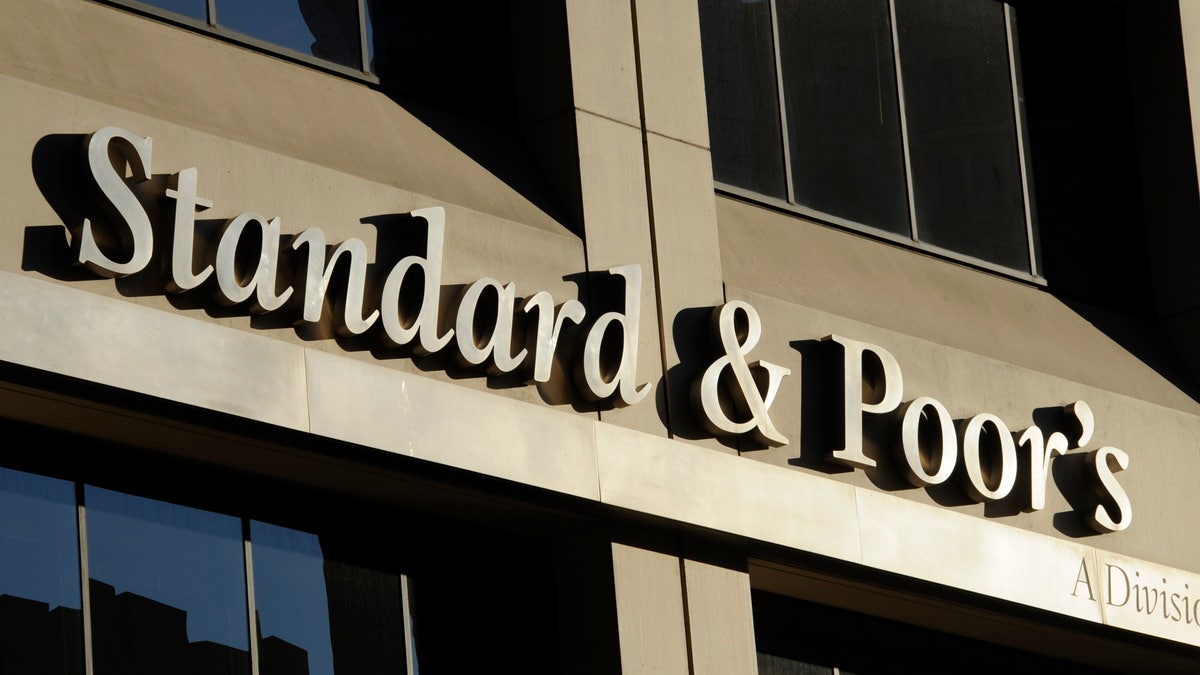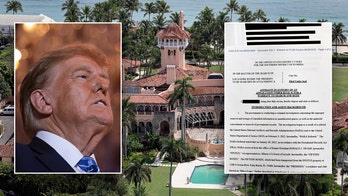
Oct. 9, 2011: File photo shows 55 Water Street, home of Standard & Poor's, in New York. S&P said Monday, Feb. 4, 2013, the U.S. government is expected to file civil charges against Standard & Poor's Ratings Services, alleging that it improperly gave high ratings to mortgage debt that later plunged in value and helped fuel the 2008 financial crisis. (AP)
The U.S. government accused Standard & Poor's of inflating ratings on mortgage investments to boost its bottom line, taking aim at a key player in the run-up to the financial crisis.
In charges filed late Monday in Los Angeles federal court, the Justice Department said S&P gave high marks to mortgage-backed securities that later went sour, even though it knew they were risky. The government said S&P misrepresented the risks because it wanted more business from the banks.
The case is the government's first major action against one of the credit rating agencies that stamped their seals of approval on Wall Street's mortgage bundles. It marks a milestone for the Justice Department, which has been criticized for failing to make bigger cases against the companies involved in the crisis.
"Put simply, this alleged conduct is egregious -- and it goes to the very heart of the recent financial crisis," Attorney General Eric Holder told a news conference Tuesday. He called the case "an important step forward in our ongoing efforts to investigate and punish the conduct that is believed to have contributed to the worst economic crisis in recent history."
Rating agencies are widely blamed for contributing to the financial crisis that crested in 2008 and caused the deepest recession since the Great Depression. They gave high ratings, indicating little risk for investors, to pools of mortgages and other debt assembled by big banks and hedge funds. That gave even risk-averse investors the confidence to buy them.
Some investors, including pension funds, can only buy investments that carry high ratings. In effect, rating agencies like S&P greased the assembly line that allowed banks to push risky mortgages out the door.
When the housing market turned in 2007, the agencies acknowledged that mortgages issued during the bubble were far less safe than the ratings indicated. They lowered the ratings on nearly $2 trillion worth, spreading panic that spiraled into a crisis.
S&P, a unit of New York-based McGraw-Hill Cos., has denied wrongdoing. It says the government also failed to predict the subprime mortgage crisis.
The government's lawsuit says S&P was more concerned with making money than issuing accurate ratings. It says the company delayed updating its ratings models, rushed through the ratings process and kept giving high ratings even after it was aware that the subprime market was flailing even as it gave high marks to investments made of subprime mortgages. In 2007, one analyst forwarded a video of himself singing and dancing to a tune about the deterioration of the subprime market, with colleagues laughing.
The government, for its part, has been widely criticized for not pursuing financial crisis wrongdoing as doggedly as some might have hoped. Lance Roberts, chief economist at Streettalk Advisors in Houston, Texas, called the lawsuit "about three years too late."
"The government's just now getting around to filing a lawsuit?" Roberts said. "It seems disingenuous to me. Why is there actually no regulation that occurs at the front end?"
Ratings agencies like S&P are a key part of the financial crisis narrative. When banks and other financial firms wanted to package mortgages into securities and sell them to investors, they would come to a ratings agency to get a rating for the security. Many securities made of risky subprime mortgages got high ratings, giving even the more conservative investors, like pension funds, the confidence to buy them. Those investors suffered huge losses when housing prices plunged and many borrowers defaulted on their mortgage payments.
This arrangement has a major conflict of interest, the government's lawsuit says. The firms that issued the securities could shop around for whichever ratings agency would give them the best rating. So the agencies could give high ratings just to get business.
The government's lawsuit says that "S&P's desire for increased revenue and market share ... led S&P to downplay and disregard the true extent of the credit risks" posed by the investments it was rating.
For example, S&P typically charged $150,000 for rating a subprime mortgage-backed security, and $750,000 for certain types of other securities. If S&P lost the business -- for example, if the firm that planned to sell the security decided it could get a better rating from Fitch or Moody's -- then an S&P analyst would have to submit a "lost deal" memo explaining why he or she lost the business.
That created sloppy ratings, the government said.
"Most rating committees took less than 15 minutes to complete," the government said in its lawsuit, describing the process where an S&P analyst would present a rating for review. "Numerous rating committees were conducted simultaneously in the same conference room."
According to the lawsuit, S&P was constantly trying to keep the financial firms -- its clients -- happy.
A 2007 PowerPoint presentation on its ratings model said that being "business friendly" was a central component, according to the government.
In a 2004 document, executives said they would poll investors as part of the process for choosing a rating.
"Are you implying that we might actually reject or stifle `superior analytics' for market considerations?" one executive wrote back. "...What is `market perspective'? Does this mean we are to review our proposed criteria changes with investors, issuers and investment bankers? ... (W)e NEVER poll them as to content or acceptability!"
The lawsuit says this executive's concerns were ignored.
A 2004 memo said that "concerns with the objectivity, integrity, or validity" of ratings criteria should be communicated in person rather than through e-mail.
Also that year, an analyst complained that S&P had lost a deal because its criteria for a rating was stricter than Moody's. "We need to address this now in preparation for the future deals," the analyst wrote.
By 2006, S&P was well aware that the subprime mortgage market was collapsing, the government said, even though S&P didn't issue a mass downgrade of subprime-backed securities until 2007. One document describing the performance of the subprime loans backing some investments "was so bad that analysts initially thought the data contained typographical errors," the government lawsuit said.
In March 2007, one analyst who had conducted a risk ranking analysis of 2006 mortgage-backed securities wrote a version of "Burning Down the House": "Going - all the way down, with/Subprime mortgages."
A video showed him singing and dancing another verse in front of S&P colleagues, who laughed.
Another analyst wrote in a 2007 email, referring to ratings for mortgage-backed investments: "The fact is, there was a lot of internal pressure in S&P to downgrade lots of deals earlier on before this thing started blowing up. But the leadership was concerned of p(asterisk)ssing of too many clients and jumping the gun ahead of Fitch and Moody's."
The government filed its lawsuit in U.S. District Court in Los Angeles. The government charged S&P under a law aimed at making sure banks invest safely, and said that S&P's alleged fraud made it possible to sell the investments to banks. .
If S&P is eventually found to have committed civil violations, it could face fines and limits on how it does business. The government said in its filing that it's seeking financial penalties.
The action does not involve any criminal allegations. Critics have long complained about the government's failure to bring criminal charges against any major Wall Street players involved in the financial crisis.
Criminal charges would require a higher burden of proof and carry the threat of jail time.
McGraw-Hill shares dropped $2.65, or 5.3 percent, to $47.65 in morning trading Tuesday after plunging nearly 14 percent on Monday in the expectation that a lawsuit would be filed.
Shares of Moody's Corp., the parent of Moody's Investors Service, another rating agency, lost $1.05, or 2.2 percent, to $48.40 in morning trading Tuesday after closing down nearly 11 percent on Monday.




